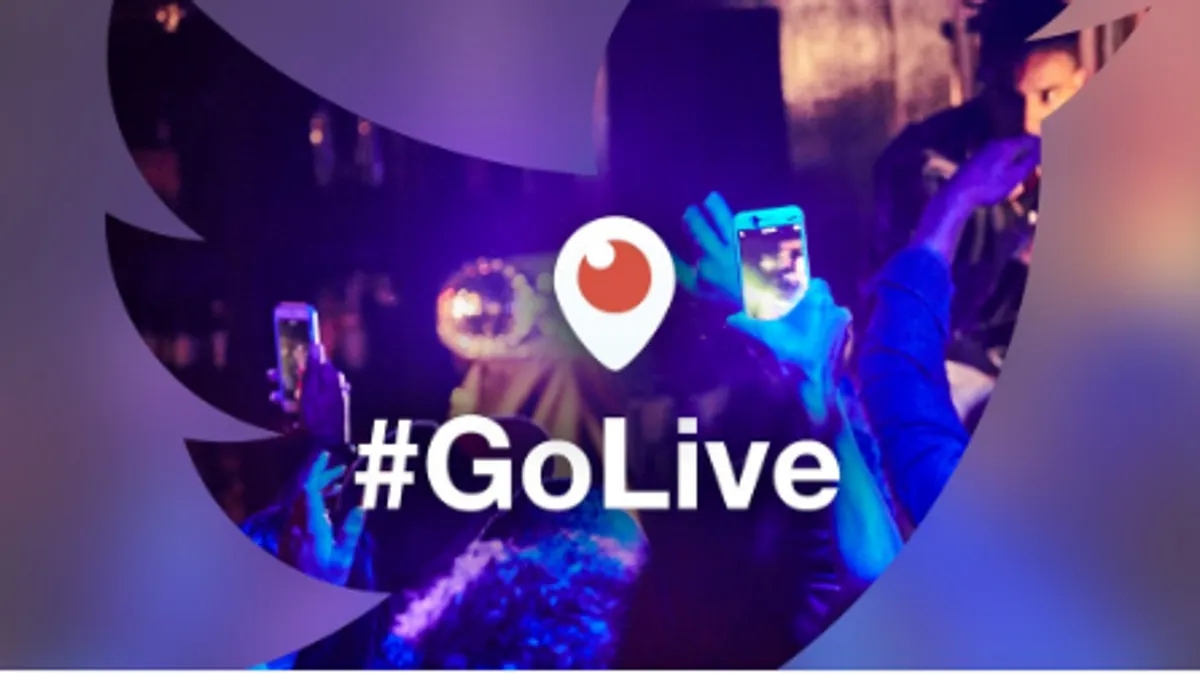Dive Brief:
- Twitter announced in a blog post that, starting today, users can create and Tweet live video from the app, with Periscope powering the experience.
- Users can share live video by creating a Tweet, tapping Live, framing their shot and then pressing Go Live to start broadcasting.
- Anyone on Twitter and Periscope can join a live video and participate by tapping the screen to comment and send hearts.
Dive Insight:
Live video has taken the digital landscape by storm in 2016, as key trends such as growing demand for digital content, real-time experiences and authenticity converge to enable anyone to broadcast an immersive moment. Successful live videos have the potential to go viral, like Candace Payne’s Chewbacca Mask broadcast did on Facebook Live, a video that has been viewed more than 162 million times.
Twitter acquired Periscope in March of 2015 soon after the sensation of Meerkat highlighted the significant potential in live video. The micro-blogging platform’s strength in real-time content made it seem a natural fit for live video. Twitter has offered live streams from key media partners, including the platform broadcasting a number of NFL games, this season. However, Twitter has been slow to integrate Periscope, with the lack of a live video feature for users until now meaning it may have missed the opportunity to gain an early foothold in this quickly growing space.
Facebook Live launched for all users at the beginning of the year, quickly becoming a focus of attention for how it has been used to film engagements between citizens and the police, some deadly. The social media giant is beginning to incorporate ads into live streams, and this week integrated 360-degree viewing with live video.
The news of live video on Twitter, likely to be popular with marketers and influencers, comes at a time when the platform is struggling to find its way forward. Recently, the company has walked away from perhaps less-successful ventures like video looping app Vine and lead generation campaigns, while trying to integrate next-gen capabilities like chatbots and live video.















